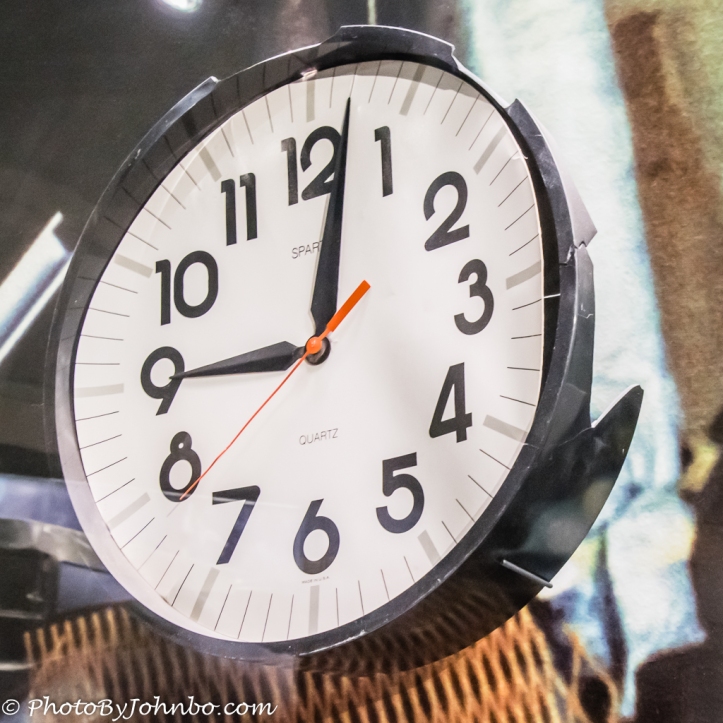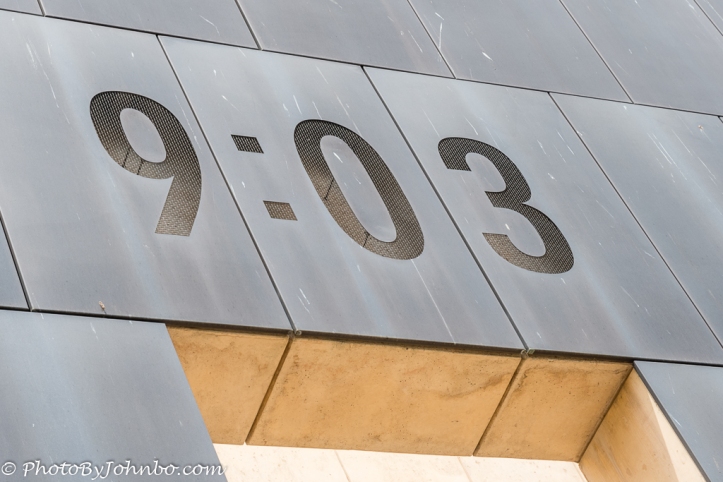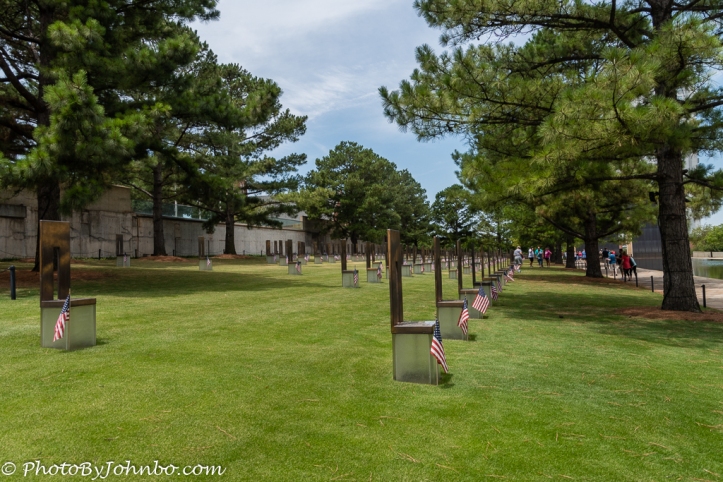Oklahoma City, Oklahoma.
I am sitting here in the wake of another national tragedy reflecting on the lives of 58 gone in an instant and over six hundred wounded at a concert in Las Vegas. However, this post is a remembrance of April 19, 1995. It started out as a normal day in the lives of a typical American citizenry. At 9:01 AM, the day was just getting started. Workers at the Alfred P. Murrah Building were just settling into their morning’s work. The day care providers on the lower floor went about the work of entertaining those too young to be in school. Across the street, a meeting of the water commission was just getting underway. The moderator started the tape recording at 9 AM and began briefing the attendees of the business meeting rules.
 At exactly 9:02 AM, the meeting and the lives of hundreds were irrevocably changed. On that tape, a large blast interrupted the proceedings. At that moment in time, a truck bomb exploded. The large box truck was packed with explosives so powerful that it ripped the facade from the building laying bare the entire front of the structure. It was in that moment and the subsequent minutes that 168 people lost their lives. The hours and days that followed were consumed with first responders searching for survivors and law enforcement beginning to unravel the trail of the individuals who would perpetrate such as heinous act.
At exactly 9:02 AM, the meeting and the lives of hundreds were irrevocably changed. On that tape, a large blast interrupted the proceedings. At that moment in time, a truck bomb exploded. The large box truck was packed with explosives so powerful that it ripped the facade from the building laying bare the entire front of the structure. It was in that moment and the subsequent minutes that 168 people lost their lives. The hours and days that followed were consumed with first responders searching for survivors and law enforcement beginning to unravel the trail of the individuals who would perpetrate such as heinous act.
 At 9:03 AM, the long journey of recovery began. There were many stories of rescue and the tragedy of recovering those who were lost forever. Ultimately the building, too far damaged to rebuild, was brought down and on the site today, they erected a memorial and built a museum dedicated to the memories of those lost and those whose lives changed forever.
At 9:03 AM, the long journey of recovery began. There were many stories of rescue and the tragedy of recovering those who were lost forever. Ultimately the building, too far damaged to rebuild, was brought down and on the site today, they erected a memorial and built a museum dedicated to the memories of those lost and those whose lives changed forever.
The panorama above constructed on the site features large walls, one representing 9:01 AM, the other 9:03 AM. A large reflecting pond separates them. Click on the image to enlarge it and you will notice the rows of chairs on the opposite side of the pond. A plaque on the site describes the field of empty chairs, 168 in all, each representing one of the Americans who were killed. There are nine rows of chairs with each row relating to the nine floors in the building. Each person’s chair is positioned in the row that represents the floor where they were working or visiting. The five westernmost empty chairs represent those who lost their lives outside the Murrah Building. The names of the victims are memorialized there and in the museum’s Gallery of Honor.
A plaque on the site describes the field of empty chairs, 168 in all, each representing one of the Americans who were killed. There are nine rows of chairs with each row relating to the nine floors in the building. Each person’s chair is positioned in the row that represents the floor where they were working or visiting. The five westernmost empty chairs represent those who lost their lives outside the Murrah Building. The names of the victims are memorialized there and in the museum’s Gallery of Honor.
Outside the building, a lone tree, severely damaged, remained standing. An American Elm stood providing shade in the parking lot of the building. Early arrivers to their place of work would be rewarded with a shady parking spot underneath the giant elm tree. It was nearly removed to recover evidence of the bomb blast, but the tree was spared. Nursed back to health after being nearly destroyed by the bomb blast, it has become a signature memorial. Cuttings of the Survivor Tree are found all over Oklahoma. From the Memorial website, “The Survivor Tree is a symbol of human resilience. Today, as a tribute to renewal and rebirth, the inscription around the tree reads, ‘The spirit of this city and this nation will not be defeated; our deeply rooted faith sustains us.'”
 When you visit, be sure to take the time to go through the museum. In addition to telling the stories of the events surrounding the tragedy, the Gallery of Honor consists of shadow boxes featuring a photo of the victim and a memorial item that once belonged to those who didn’t come home again that day. The walk through the gallery is heart-wrenching.
When you visit, be sure to take the time to go through the museum. In addition to telling the stories of the events surrounding the tragedy, the Gallery of Honor consists of shadow boxes featuring a photo of the victim and a memorial item that once belonged to those who didn’t come home again that day. The walk through the gallery is heart-wrenching.
The museum, which underwent a complete rededication in 2015, 20 years after the event, now is laid out in ten chapters from “A Day Like Any Other” to “Hope”. The exhibit above, from Chapter 5B – Rescue and Recovery features stories of trapped survivors, rescue workers and many volunteers. The photo above depicts a sculpture created as an inspiration from a Pulitzer Prize winning photo by Charles H. Porter IV. Firefighter Chris Fields is shown cradling the dying 1-year-old Baylee Almon. Baylee was one of the 15 children killed in the building’s daycare center. She died on her 366th day of life.
On the side of the old Journal Record building next door to the Murrah Building, Rescue Team 5 left an angry message in red lettered spray paint. The red pigment is now gone, faded to a dull blue, but the message is still as angry and as poignant as it was the day it was written.
Team 5
4-19-95
We search for the truth.
We seek justice.
The courts require it.
The victims cry for it.
And God demands it!
That Old Journal building is now the Oklahoma City Memorial Museum. The gallery of images below were captured in the museum and on the grounds of the memorial. In most browsers, you can click on an image to enlarge it and to scroll through the collection.
John Steiner

























Like the holocaust museum in Manhattan… I imagine this memorial is just as painful as it is interesting. A dark day in American history.
Indeed. The museum is not to be missed if you are anywhere near the city.
What a poignant, solemn place, John, for remembering the lives lost so innocently and undeservedly. I can’t even imagine how heart wrenching it must be to have a one year old baby die in your arms because of such a heinous act.
Indeed. This is a moving memorial and one of the most somber places I’ve been in recent years.
I had no friends nor family touched by this tragedy. But I was moved more by this memorial when I visited in 2000-2001 than I was by the 9-11 memorial. perhaps because it was the first. but it was beautifully designed and executed and that tree was amazing to see. Thanks, John. You did a great job with this post.
Thank you. It was a hard post to write, especially in light of recent events.
I have driven past and never gone. I plan to run in the memorial marathon this year.
I found it so moving. It’s worth the stop.
Sort of unrelated but I DID make my way to the JFK Museum in Dallas and that was very interesting.
I was there as well, but a very long time ago, probably close to 20 years or so.